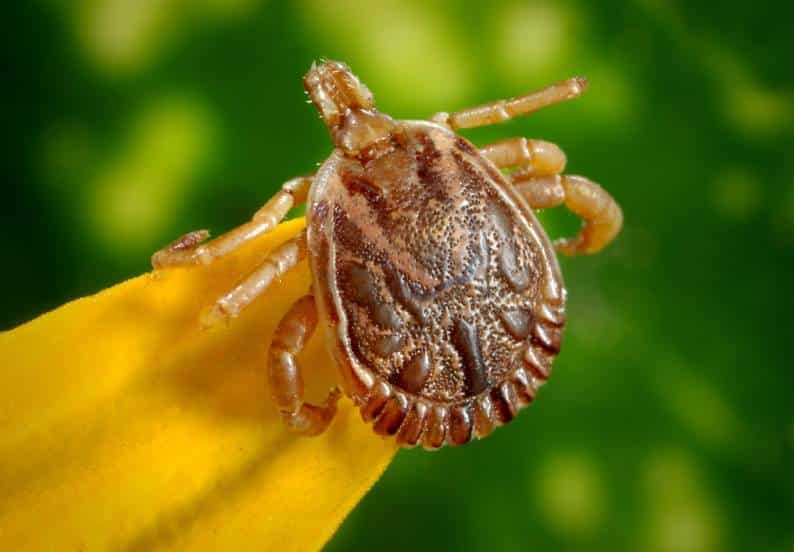words Al Woods
Ticks are small, parasitic creatures that feed on the blood of animals. They can be found in wooded and grassy areas, as well as near bodies of water. Ticks can attach to both humans and their pets, making it important to take preventative measures against them. Unfortunately, many pet owners aren’t aware of the dangers posed by ticks or how to protect their pets from them. Here are six facts about tick infestations that every pet owner should know in order to keep their furry friends safe from these pests.
1. Ticks are a major vector for diseases
When ticks attach to their host, they can transmit serious illnesses such as Lyme disease, Rocky Mountain spotted fever, and ehrlichiosis. These diseases can cause serious health issues in both humans and animals alike, including neurological damage and even death. The best way to prevent these diseases is by avoiding tick-infested areas and using preventative medications on pets. Knowing how to recognize the signs of tick-borne illnesses is also important. If you see any signs, such as fever, lethargy, or a rash, contact your veterinarian right away.
2. Ticks can latch on to your pet anywhere
Ticks can attach to any part of a pet’s body, including its face, ears, and legs. They often hide in places like between toes or in hard-to-spot areas such as behind the ears and inside the tail fur. Regularly checking your pet for ticks is the best way to prevent an infestation, as well as using tick-preventative medication. Knowing where to check when you notice excess scratching or licking can help you spot any ticks quickly and remove them before they transmit disease.
For instance, let’s say that you notice your dog is scratching his ears more than usual. You should check around the edges of his ears, as this is a common spot for ticks to attach.
3. Dangers of Wrong Removal Methods
Unfortunately, many pet owners do not know how to properly remove a tick from their pets. In some cases, people use inappropriate methods such as applying heat or Vaseline in order to get rid of the parasite. This can actually cause more harm than good, as these techniques can injure the skin and increase the chances of illness transmission. Namely, the professionals from waggel.co.uk say that you should use tweezers that allow you to grab the tick as close to the skin as possible and firmly twist it until it comes out. This method will ensure that all pieces of the tick are removed, reducing the risk of any illnesses being transmitted.
4. Ticks can survive through Winter
Ticks may slow down in colder weather but they won’t die. They can stay active even in low temperatures by hiding in animal burrows or pet bedding. That’s why it’s important to take measures against them all year round. Additionally, grooming and brushing your pet frequently can help remove ticks that may have attached to them. The more you groom your pet, the less likely they are to carry ticks, still, you should keep an eye out for any signs of a tick infestation.
5. Tick preventative measures are necessary
Even if you live in an area where there isn’t a lot of tick activity, it’s still important to take preventive measures against them. This includes using tick-preventative medications such as collars, sprays, and ointments that will repel ticks before they have the chance to attach. It is important to check your pet for any signs of ticks or other parasites after taking them outside for walks or playtime. Take the time to inspect their fur and paws for any signs of ticks, and remove any you may find.
6. Ticks can lay eggs inside your home
Once a tick has latched onto a pet, it can lay its eggs in carpets and furniture. This can cause an infestation that will require professional pest control to safely remove. The eggs can hatch even in indoor environments, so it’s important to take measures against ticks both inside and outside your home. A good way to spot any potential tick-related issues is by regularly inspecting your pet’s fur and doing frequent home cleanings. The eggs won’t hatch if they don’t come into contact with a host, so it’s important to keep your home clean and free of debris.
In conclusion, ticks are a serious threat to the health of both humans and animals. They can transmit deadly diseases such as Lyme disease and Rocky Mountain spotted fever, so taking preventive measures is essential. Knowing how to recognize signs of tick-borne illnesses in pets and where to check for them is also important. Additionally, it’s imperative that pet owners know how to properly remove ticks from their furry friends using tweezers if necessary. To prevent tick infestations, you need to be alert throughout the year. This involves avoiding areas with high tick populations, regularly grooming your pet, and checking your home for possible tick eggs or larvae. By following these six tips on ticks and their harmful effects on pets, you can ensure your pet’s safety.





















